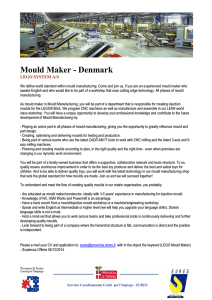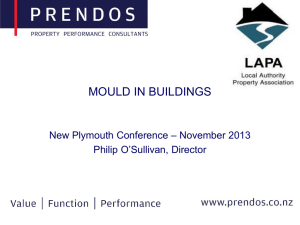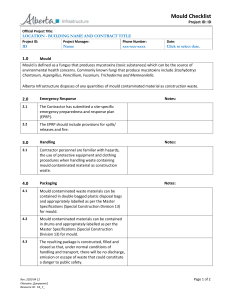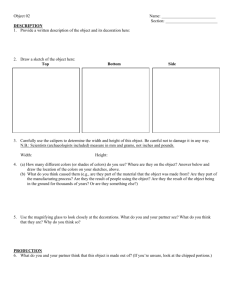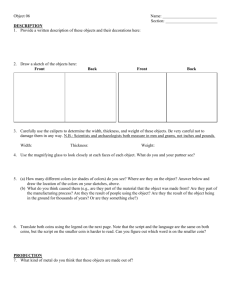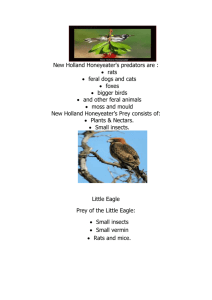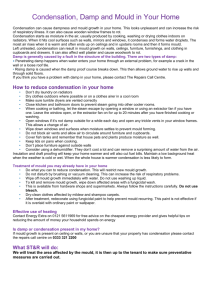RISK ASSESSMENT FORM
advertisement
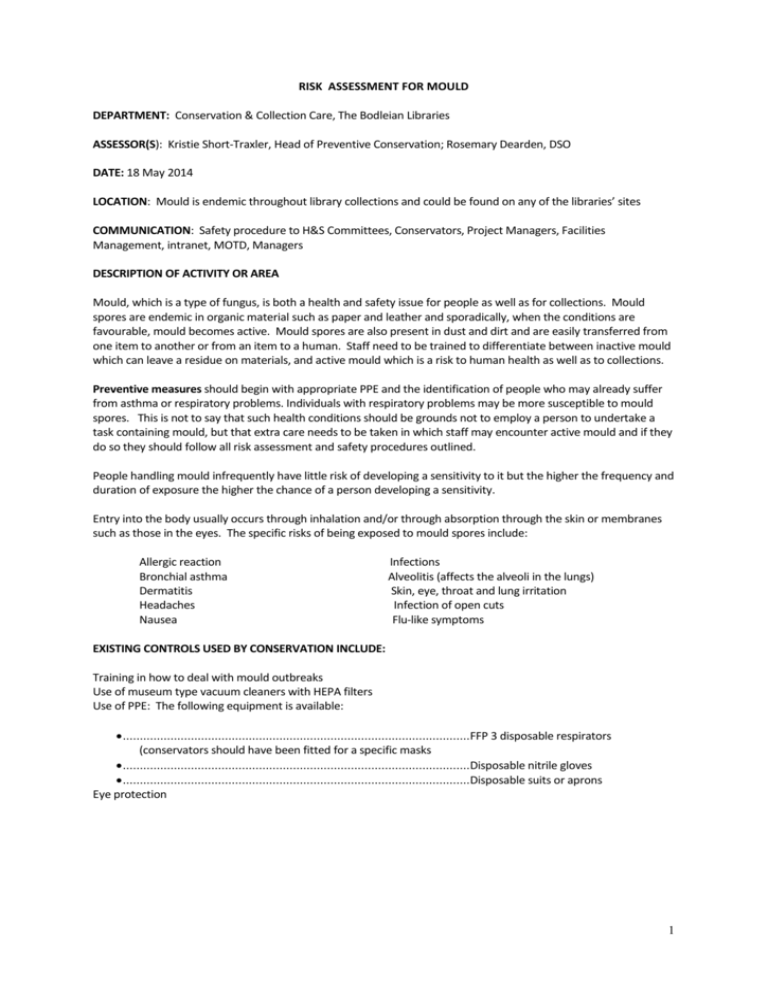
RISK ASSESSMENT FOR MOULD DEPARTMENT: Conservation & Collection Care, The Bodleian Libraries ASSESSOR(S): Kristie Short-Traxler, Head of Preventive Conservation; Rosemary Dearden, DSO DATE: 18 May 2014 LOCATION: Mould is endemic throughout library collections and could be found on any of the libraries’ sites COMMUNICATION: Safety procedure to H&S Committees, Conservators, Project Managers, Facilities Management, intranet, MOTD, Managers DESCRIPTION OF ACTIVITY OR AREA Mould, which is a type of fungus, is both a health and safety issue for people as well as for collections. Mould spores are endemic in organic material such as paper and leather and sporadically, when the conditions are favourable, mould becomes active. Mould spores are also present in dust and dirt and are easily transferred from one item to another or from an item to a human. Staff need to be trained to differentiate between inactive mould which can leave a residue on materials, and active mould which is a risk to human health as well as to collections. Preventive measures should begin with appropriate PPE and the identification of people who may already suffer from asthma or respiratory problems. Individuals with respiratory problems may be more susceptible to mould spores. This is not to say that such health conditions should be grounds not to employ a person to undertake a task containing mould, but that extra care needs to be taken in which staff may encounter active mould and if they do so they should follow all risk assessment and safety procedures outlined. People handling mould infrequently have little risk of developing a sensitivity to it but the higher the frequency and duration of exposure the higher the chance of a person developing a sensitivity. Entry into the body usually occurs through inhalation and/or through absorption through the skin or membranes such as those in the eyes. The specific risks of being exposed to mould spores include: Allergic reaction Bronchial asthma Dermatitis Headaches Nausea Infections Alveolitis (affects the alveoli in the lungs) Skin, eye, throat and lung irritation Infection of open cuts Flu-like symptoms EXISTING CONTROLS USED BY CONSERVATION INCLUDE: Training in how to deal with mould outbreaks Use of museum type vacuum cleaners with HEPA filters Use of PPE: The following equipment is available: ......................................................................................................FFP 3 disposable respirators (conservators should have been fitted for a specific masks ......................................................................................................Disposable nitrile gloves ......................................................................................................Disposable suits or aprons Eye protection 1 TASK 1. Fetching and returning books HAZARDS and RISKS If active mould is discovered there may be the risk of inhalation or absorption of spores AFFECTED PERSONS Bookstack staff Curators Library assistants Book Movers 2. Books with a mould problem being delivered to Readers Exposure to spores Bookstack staff Reading Room staff Readers 3. Bar Coding work Exposure to spores Inventory Control Team 4. Moving quantities of books and materials from one location to another Exposure to spores Book Moving teams 5. Book tagging Exposure to spores Bodleian Porters, staff tagging books TASK RISKS 6. Clearing materials particularly from the Bodleian stack Exposure to spores 7. Assessing mould outbreaks Exposure to spores AFFECTED PERSONS Porters, Bookstack staff, C&RD staff, curators etc Conservation staff EXISTING CONTOLS Short term exposure Mould outbreaks should be reported to Conservation and should not be dealt with by other staff. Short term exposure Materials showing signs of active mould should not be delivered to readers but should be sent to or reported to Conservation. Short term exposure Need to call Conservation Short term exposure Need to call Conservation Porters are already issued with FFP3 masks for dust. EXISTING CONTOLS Risk level L/M/H L L L L M Risk level If staff discover a mould outbreak whilst clearing areas of the stack they should cease working in the area and call Conservation M Short term exposure. Wear a face mask L FURTHER ACTIONS Safety procedure to be issued Information on recognition of active mould to be included. Instructions to be included in Safety Procedure. Risk level L/M/H L L Ensure instructions are relayed to Inventory Control supervisors Ensure instructions are relayed to Project Manager and Team Leaders L Staff should not continue to work on tagging books if active mould is present but refer to Conservation FURTHER ACTIONS L Safety procedure to be issued. Restrict access to the area or isolate the object. Take measures to dry materials out eg ventilation or dehumidifier. L L Risk leve 2 and nitrile gloves. 8. 9. Dealing with a serious mould outbreak Dealing with infected items in the Conservation studio Exposure to spores Conservation staff Packaging infected materials to be sent to Harwell L as long as control measures are in place Instructions to Conservation staff on disposal of PPE and disposal of cloths. Use of overalls should mean clothes are protected from spores . Exposure to spores Conservation staff COSHH assessment has been updated. Use vacuum with HEPA filter. Where possible conduct activity in a fume cupboard or use natural ventilation such as fresh air. Put waste cotton wool in fume cupboard to evaporate. L as long as control measures are used Exposure to spores Conservation staff Wear appropriate PPE for the scale of the job L as long as control measures are used. Use of IMS solvent to clean materials. 10. Risk assessment of the job to be done. Long term exposure may require additional PPE such as a disposable suit and safety glasses. 3
